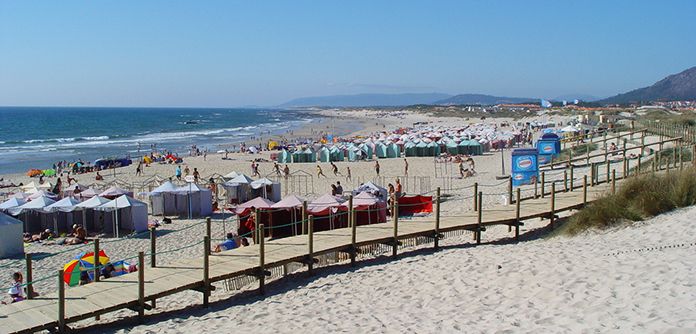The northern and central coastlines have spectacular cliff faces dropping into white sandy beaches. The northern parts are characterised inland by mountainous and hilly areas with fertile land, while the south stretches into drier plains, with rolling hills and a broad coastal plain. The Tagus River acts as a physical and natural border, and divides the Iberian Peninsula into distinct regions.
I wondered at what point does a hill become a mountain? When does a stream become a river? How come some of our beaches are sandy while others have pebbles, and how do the pebbles become round and smooth?
The mountain question doesn’t have a rule of thumb. It’s all to do with height and slope, and is measured from sea level, with any peak above 2,500m considered a mountain. We have mountains and hills in Portugal that make up a significant portion of the country's terrain, with the highest peak on the mainland being Torre in the Serra da Estrela range, reaching 1,993m, so not technically a mountain.
Rivers seem fairly easy. A stream typically becomes a river when its channel width reaches 15 metres. A stream can be called many things - brook, creek, beck, burn, tributary and others, so maybe not as easy to describe as first thought, but are just called ‘ribeira’ or ‘córrego’ here. Portugal has numerous rivers with several major ones like the Tagus, Douro, Guadiana, and Minho, with innumerable streams, some of which dry up and disappear completely in the summer months.
Sand and Pebbles are all Rocks
Which leads us to beaches – and the humble beach pebble. It starts life as a piece of rock, but due to the power of the ocean and the relentless forces of erosion and weathering over time, the ocean's waves and tides slowly but surely wear them down. The constant movement of the sea causes the rocks to crack and break apart, which creates smaller and smaller pieces that continually rub against each other and wear down. They become smaller and more rounded, with the process being called ‘attrition’, eventually forming the smooth, rounded pebbles that we are familiar with. This can take thousands of years, with pebbles being constantly tossed about by the ocean's waves and tides.

As pebbles are carried along the coastline, they are subjected to a process known as ‘sorting’, where the ocean's currents and tides naturally sort the pebbles by size and shape, depositing them on the beach in a specific order. The big pebbles are deposited first, closest to the water's edge. Smaller, more lightweight pebbles - maybe sandstone or limestone - are carried higher up the beach, where they are left in a layer on top of the larger pebbles. This sorting process is what gives beaches their characteristic ‘pebble gradient’, with tiny, incremental changes occurring over thousands of years.
But the story of the beach pebble doesn't end there. As the pebbles continue to be worn down by waves and tides, they eventually become tiny grains of sand that are carried away by wind or water. Over long periods of time, sand can also reform back into rock through geological processes where sediment, including sand, is compacted and cemented together, and the cycle starts again.
Leave only footprints and take only photos
Portugal's coastline features over 850 kilometres of sandy beaches, with the Algarve alone boasting 200 kilometres. Shingle or stony beaches are less common, but Praia do Belinho in the north has hundreds of lovely round pebbles of various sizes. If you fancy taking some home, please don’t – it isn’t legal to remove pebbles from beaches here, because removing natural materials can be damaging to the environment, and as it stands now, an average of 0.24 metres of land are lost to erosion along our shoreline annually. A growing body of research warns that the speed of coastal erosion will be compounded by sea-level rise and other effects of climate change, so please don’t make it worse!
Pebbles might be insignificant-looking rocks, but they are part of the forces that shape our coastlines and the never-ending cycle of erosion and weathering that shapes Mother Earth.
Marilyn writes regularly for The Portugal News, and has lived in the Algarve for some years. A dog-lover, she has lived in Ireland, UK, Bermuda and the Isle of Man.















